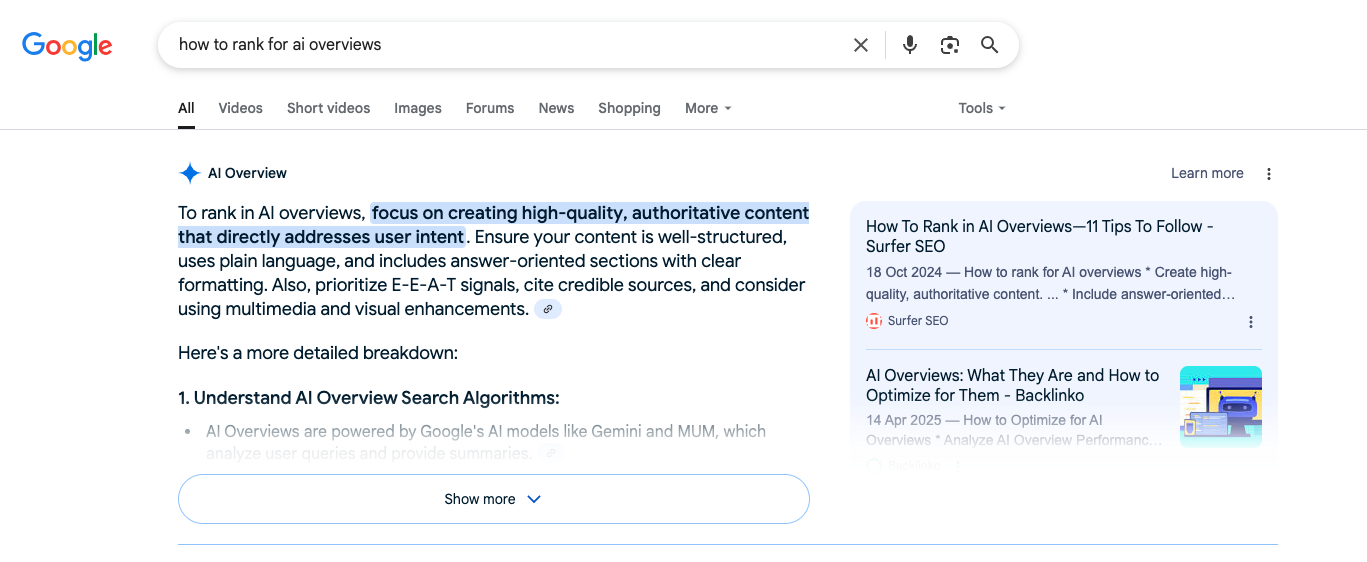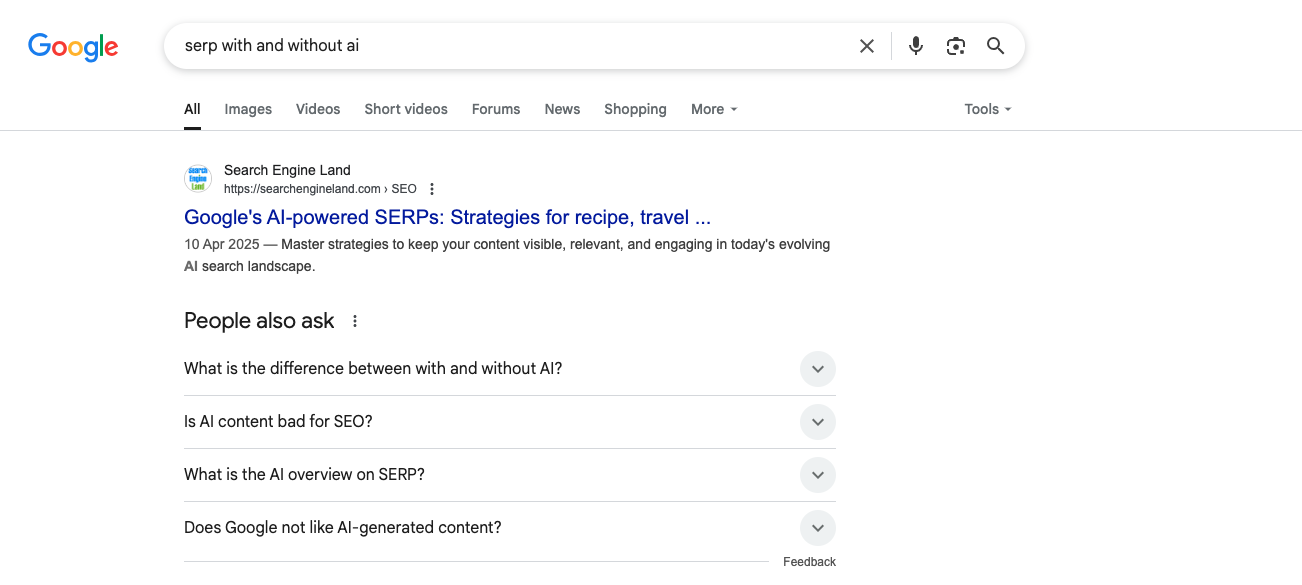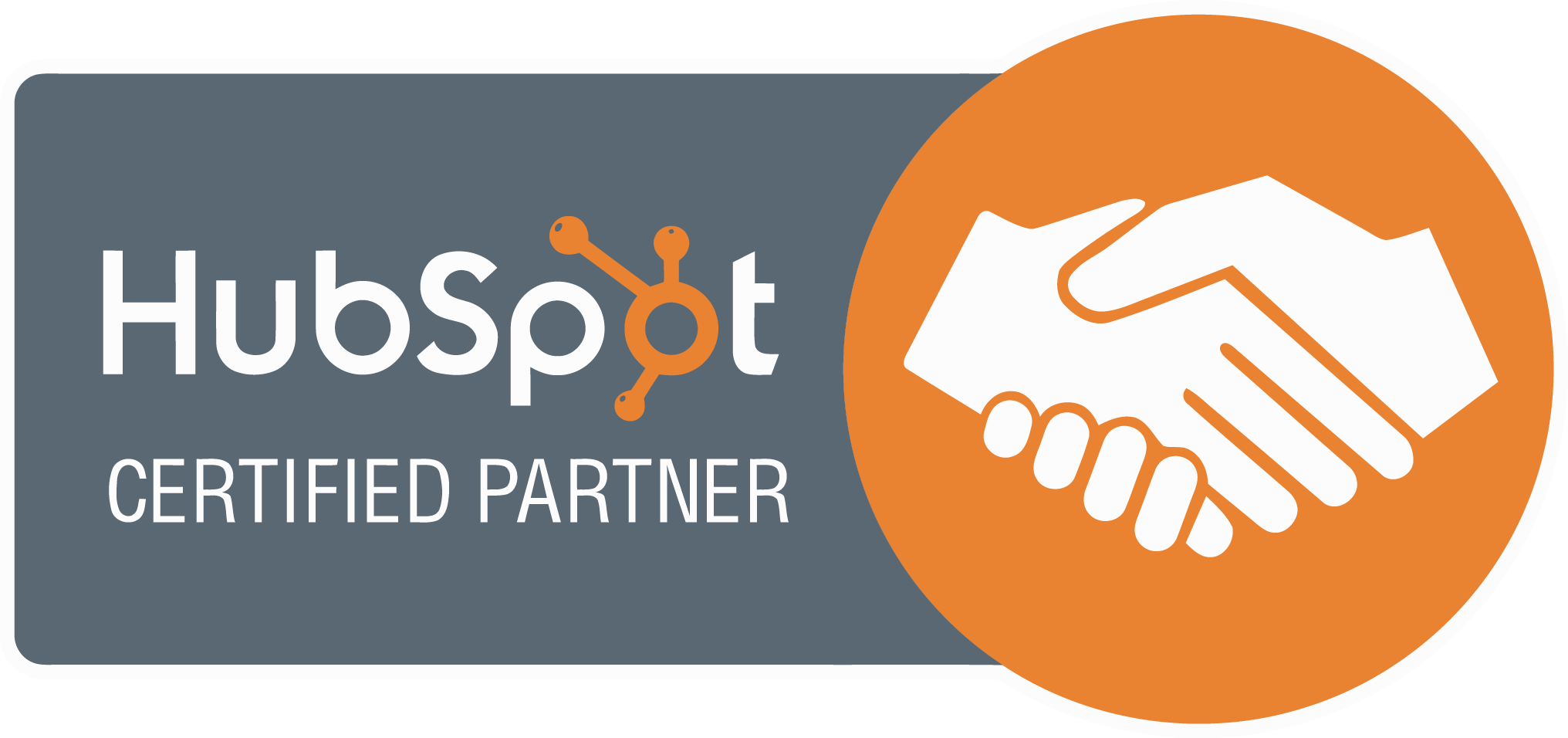What does AI Searches mean for your business?

- Clickless Search & AI Overviews
- Understanding SEO for AI
- The Evolution of SEO and AI
- AI Content Optimisation: The Heart of AIO
- Practical Steps to Implement AIO
- SEO Automation Tools: Streamlining Your SEO Endeavours
- Measuring the Effectiveness of AI-Driven SEO Strategies
- The Future of SEO: The Growing Impact of AI
- Conclusion: Embracing AI in Your SEO Strategy
The digital landscape is evolving. It’s becoming more complex, more dynamic, and more competitive. In this environment, search engine optimisation (SEO) is no longer a luxury. It’s a necessity.
But traditional SEO methods are no longer enough. The rise of artificial intelligence (AI) is changing the game. AI is transforming how search engines operate. It’s reshaping how they understand and interpret content.
This shift has given birth to a new approach: AIO SEO for AI. This strategy combines the power of AI with the principles of SEO.
The goal? To optimise your website for both search engines and users. But what does AIO SEO for AI mean? How does it work? And why should you care? This comprehensive guide will answer these questions. It will delve into the world of AI content optimisation and SEO automation tools. It will provide practical steps to implement AIO SEO for AI effectively. It will also explore the future of SEO in the AI era.
Whether you’re a digital marketer, an SEO specialist, or a website owner, this guide is for you. It’s designed to help you navigate the AI-driven SEO landscape.
So, are you ready to optimise your website for AI? Let’s dive in.
Clickless Search & AI Overviews


Search behaviour is changing. With the rollout of AI-powered features like Google’s Search Generative Experience (SGE), more users are getting answers directly on the search results page—without clicking through to a website. This is known as “clickless search.”
While traditional SEO focused on driving traffic through clicks, clickless search shifts the emphasis toward visibility and authority. AI overviews summarise content from multiple sources, meaning your brand can appear in high-visibility areas even if users don’t visit your site.
To adapt, your content must be structured for clarity and machine readability. That includes using schema markup, clear headings, and directly answering questions that align with user intent. Think concise, informative, and authoritative.
Although this trend may lead to fewer site visits, it enhances brand exposure and builds credibility in search results. AIO SEO strategies should account for this shift, ensuring your content is optimised not just for clicks—but for inclusion in AI summaries that shape user decisions before they ever visit a page.
🧠 Are You Ready for Clickless Search?
1. Do you use structured data (schema) on key pages?
2. Can your content be read and summarised without scrolling?
3. Are you targeting questions, not just keywords?
Understanding SEO for AI
Content Optimisation
Use AI to improve clarity, relevance, and semantic accuracy in your website content.
Automation
Reduce manual work by automating SEO tasks like reporting, tracking, and technical audits.
Data Analysis
Leverage AI-powered tools to uncover patterns in user behaviour and search performance.
As technology progresses, AI is increasingly taking centre stage. In the realm of SEO, this progression is vital.
AIO SEO merges artificial intelligence and optimisation techniques. This fusion is crucial for staying competitive in today’s digital world. To truly understand AIO SEO for AI, one must explore several core components. These include AI content optimisation, SEO automation tools, and AI-driven SEO strategies.
These elements work together to offer a cohesive approach. This approach improves both visibility and user experience.
AIO SEO for AI focuses on leveraging machine learning. Machine learning enables predictions and insights that were previously unattainable.
This capability to harness data leads to more effective SEO outcomes. Here, analysis and interpretation become the driving forces of success. Implementing these strategies allows businesses to tailor content. Tailored content targets user intent and behaviour more accurately.
Let’s distil this understanding into a simple framework:
The Evolution of SEO and AI
SEO is not static. It evolves, reflecting shifts in technology and user behaviour.
AI has accelerated this evolution, offering new capabilities to analyse and predict trends. Machines learn and interpret data more precisely than humans alone can.
In the past, keyword stuffing was often sufficient. Websites focused on keyword density to rank higher.
Today, search engines analyse content contextually. AI understands user intent and nuances, which traditional SEO methods miss. The importance of semantic search and NLP (natural language processing) is growing. These technologies help engines understand complex queries and deliver relevant results. This shift requires SEO professionals to adopt AI strategies. Leveraging AI can unlock new levels of engagement and conversion.
Why AIO is Crucial for Your Website
AI algorithms better interpret user intent, enhancing search result accuracy. This accuracy translates to improved website traffic and engagement.
Here are some reasons why it’s crucial:
- Improved Efficiency: Automation simplifies repetitive tasks.
- Enhanced Insights: AI deciphers complex data trends.
- Better User Experience: Content aligns more closely with user intent.
Understanding these advantages ensures that businesses are well-positioned. AIO makes websites more competitive and adaptable.
Aligning content with user expectations not only boosts visibility. It also strengthens brand loyalty and trust.
Ultimately, integrating SEO with AI strategies ensures you remain ahead. In the fast-paced digital world, adaptability is vital for success.
AI has accelerated this evolution, offering new capabilities to analyse and predict trends. Machines learn and interpret data more precisely than humans alone can.
In the past, keyword stuffing was often sufficient. Websites focused on keyword density to rank higher.
Today, search engines analyse content contextually. AI understands user intent and nuances, which traditional SEO methods miss. The importance of semantic search and NLP (natural language processing) is growing. These technologies help engines understand complex queries and deliver relevant results. This shift requires SEO professionals to adopt AI strategies. Leveraging AI can unlock new levels of engagement and conversion.
AI Content Optimisation: The Heart of AIO SEO
AI content optimisation focuses on refining content with precision. It aligns with audience preferences and enhances user engagement.
The core of this process is understanding how to create content that speaks to both algorithms and humans. Striking this balance requires strategic planning and execution.
AI tools analyse vast datasets to identify patterns. These patterns reveal insights into user behaviour and preferences.
These insights help in crafting content that is more effective and relevant. Through automation, tasks like content auditing and updating become simpler.
Consider AI content optimisation as a cycle of continuous improvement. Algorithms constantly learn from new data, refining strategies over time.
This ever-evolving approach ensures that your content remains fresh and aligned with user needs. AI enables personalised content experiences that enhance satisfaction.
Benefits of AI content optimisation include:
- Relevance: Creates content that matches user intent.
- Efficiency: Automates tedious content-related tasks.
- Adaptability: Quickly responds to algorithm changes.
Why AIO is Crucial
- Efficiency: Automate repetitive tasks to save time.
- Insights: Understand performance trends using machine learning.
- Better UX: Align content with searcher intent to improve engagement.
Leveraging Natural Language Processing for Better Content
Natural Language Processing (NLP) is pivotal in content creation. It helps machines understand and interpret human language.
With NLP, search engines grasp complex queries and deliver precise results. For content creators, this means writing in ways machines can easily comprehend.
Incorporating NLP involves analysing keywords and context. This analysis guides content structure, ensuring readability and relevance.
Syntax and semantics become crucial in crafting engaging articles. NLP tools offer suggestions on how to optimise for both search engines and end users.
Think of NLP as your content compass. It directs efforts towards topics and phrases that align with user searches.
Creating AI-Friendly Content That Engages Users
AI-friendly content meets two critical criteria: readability for machines and relatability for humans. This content should resonate emotionally while delivering value.
Begin by focusing on clarity and conciseness. Complex language can alienate readers and baffle algorithms.
Use semantic keywords strategically, integrating them naturally into the narrative. This practice improves search visibility without sacrificing content flow.
Visual aids like images and videos enhance engagement. These elements should also be optimised for search engines.
Interactive elements can further captivate users. Consider polls, quizzes, or infographics that involve the audience actively.
AI-friendly content also adapts to different formats and platforms. Flexibility ensures content reaches diverse audiences effectively.
The Role of Data Analysis in Content Strategy
Data analysis plays a critical role in shaping content strategies. It provides insights into what works and what needs improvement.
By examining user data, you can tailor content to meet specific audience needs. This personalisation leads to higher engagement and satisfaction rates.
Tracking metrics such as bounce rate and dwell time provides valuable feedback. This data helps refine future content and strategies.
Ultimately, data-driven decisions contribute to a more dynamic content approach. A cycle of continuous analysis and adaptation ensures alignment with user desires.
Practical Steps to Implement AIO
How to Implement AIO
- Use AI tools to analyse audience data.
- Optimise content for semantic relevance and user intent.
- Use structured data and alt text.
- Automate audits and keyword tracking.
- Continuously refine based on AI feedback.
Implementing AIO involves several strategic steps. These steps ensure that your website remains competitive and visible in search engines.
The first step is to comprehend your audience deeply. AI tools assist in analysing user behaviour, providing insights into preferences and expectations.
Next, consider the importance of semantic search. It involves understanding and optimising for user intent, a key aspect of AI-driven algorithms.
Ensuring your content is machine-readable is critical. Use structured data and schema markup to help AI comprehend your website’s content and purpose.
AI algorithms favour websites with a robust, well-structured architecture. Ensure your site’s navigation is clear and logical for both users and search engines.
Image optimisation should also be part of your strategy. AI can recognise and interpret visual content; therefore, using alt text and descriptive filenames is beneficial.
Regularly updating content improves relevance, keeping it fresh and engaging. AI can suggest trending topics, aiding in maintaining content dynamism.
Integrate feedback loops using AI to continuously measure performance. This helps in refining strategies based on user and algorithmic feedback.
These actions result in a more AI-friendly website:
- Audience Understanding: Leverage AI to gain deep insights.
- Semantic Optimisation: Focus on intent and relevance.
- Content Structuring: Implement schema markup and alt text.
Keyword Research and Selection with AI
AI revolutionises keyword research by offering precision and depth. Traditional methods often fall short in capturing user intent.
AI tools assess large datasets to identify keyword trends and patterns. This results in a more targeted and effective SEO approach.
Semantic analysis plays a crucial role here. AI evaluates not just keyword frequency, but also context and relevance to search queries.
Long-tail keywords are especially significant in an AI context. They offer a higher chance of conversion and match specific user intentions.
AI tools also monitor keyword performance in real-time. Adjust strategies promptly based on how keywords are ranking and performing.
Predictive analytics provided by AI anticipates future trends. This allows for proactive adjustments to your keyword strategy.
Optimising Website Structure for AI Algorithms
Website structure is pivotal for SEO success, particularly with AI in the mix. A clean structure enhances both user experience and search engine indexing. Begin with clear, logical navigation. AI algorithms appreciate a structured approach with smooth transitions between pages.
Implement internal linking to connect related content. This ensures AI algorithms recognise content clusters and topic relevance. Page loading speed also impacts site structure effectiveness. AI considers fast-loading websites more reliable and user-friendly.
Responsive design is a must as AI algorithms favour mobile-friendly websites. Ensure your website adapts seamlessly to various devices.
Use sitemaps to help AI crawl and understand your website layout. This ensures all pages are indexed accurately and efficiently.
On-Page SEO Optimisation with AI
On-page optimisation is enhanced with AI’s precision and insight. It ensures content and technical elements align with AI algorithms.
AI suggests improvements for meta tags and headings. Proper optimisation of these elements increases content visibility and relevance.
Content quality is vital; AI evaluates readability and engagement levels. Ensure content is clear, informative, and aligns with user intent.
Regularly test and update on-page elements to maintain their relevance. AI tools provide insights on what adjustments yield the best results.
Monitor user interactions through AI analytics to refine on-page strategies. This iterative approach ensures alignment with evolving AI algorithms.
SEO Automation Tools: Streamlining Your SEO Endeavours
Automation in SEO transforms the way you approach optimisation tasks. It saves time and increases efficiency across various processes.
SEO automation tools deal with repetitive tasks, freeing up time for strategic efforts. Whether it’s backlink analysis or keyword tracking, automation ensures precision.
These tools enhance productivity by analysing large datasets quickly. Decisions are informed by data, not guesswork, leading to more effective strategies.
Imagine monitoring your SEO performance without manual checks. Automation tools provide real-time updates, enabling a faster response to changes.
The integration of automation tools significantly improves task management. It simplifies complex processes, making them more accessible for teams of all sizes.
Benefits include increased speed, efficiency, and accuracy in handling SEO responsibilities. This leads to improved performance and better rankings over time.
It’s important to understand the capabilities and limitations of these tools. Whilst they excel in data processing, they require human oversight for creativity and strategy.
Here’s how automation revolutionises SEO:
- Efficiency: Automates routine and time-consuming tasks.
- Consistency: Ensures that your strategies are always consistent and up-to-date.
- Insight: Provides deep insights through advanced analytics.
The Benefits of Automating SEO Tasks
Automating SEO tasks brings numerous advantages to digital marketers. The foremost benefit is time-saving, which can be allocated to strategic planning.
Tasks like keyword research and competition analysis require substantial time when done manually. Automation tools complete these tasks swiftly and accurately.
With automation, there’s less room for human error. Tools maintain consistent performance, delivering reliable results across campaigns.
Another significant benefit is data analysis efficiency. Automated systems process more data in less time, offering deeper insights.
This efficiency accelerates decision-making processes, enabling quicker adjustments to changing trends. Staying ahead of the competition becomes more manageable.
How to Choose the Right SEO Automation Tools
Choosing the right SEO automation tool involves careful consideration of several factors. Start by identifying your specific needs and objectives.
Tools vary in features, ranging from keyword analysis to comprehensive SEO suites. Selecting the right tool depends on the scope of your projects.
User-friendliness is crucial, especially for teams with varying technical skills. An intuitive interface makes adoption easier and reduces the learning curve.
Consider the scalability of the tool as your business grows. It should accommodate increasing demands without compromising performance.
Cost is another factor. While investing in quality tools is sensible, ensure they fit within your budget restrictions.
Evaluate customer support and training options offered by the provider. Effective support is essential for smooth tool integration and issue resolution.
Integrating SEO Automation Tools with AI Strategies
Integrating SEO automation tools with AI strategies enhances their effectiveness. It forms a cohesive approach to search engine optimisation.
Automation tools carry out repetitive tasks while AI focuses on strategic insights. Together, they drive a more refined and impactful SEO strategy.
Collaboration between tools and AI allows for data-driven decisions. AI analyses data patterns, whilst automation implements necessary actions.
For seamless integration, ensure both systems communicate effectively. This synergy maximises the potential of each technology in achieving your SEO goals.
Measuring the Effectiveness of AI-Driven SEO Strategies
Tracking the success of AI-driven SEO strategies requires a new set of metrics. Traditional metrics may not fully capture AI’s impact.
It’s crucial to evaluate user engagement thoroughly. AI tools provide insights into how users interact with your site. This includes understanding which pages keep visitors engaged.
Conversion rates offer direct evidence of strategy effectiveness. Monitor changes closely after implementing AI optimisations.
AI-driven tools can assess content relevance with precision. They help determine if content matches user intent and satisfies search algorithms.
Analyse bounce rates to understand user satisfaction and content pertinence. AI tools can suggest alterations to lower these rates.
Monitor your site’s SERP ranking changes. AI enhancements ought to improve visibility and positioning over time.
Adopt a holistic view by integrating data from multiple AI tools. This gives a comprehensive picture of your SEO strategy’s performance.
Utilise AI feedback for continuous optimisation. Let data guide iterative improvements and innovative approaches.
Key Performance Indicators for AI SEO
Key performance indicators (KPIs) for AI SEO differ from traditional metrics. They focus on AI’s unique contributions.
Engagement metrics are vital KPIs. Monitor session duration and page depth for insights into user behaviour. These metrics reflect content’s effectiveness in holding attention.
Focus on user retention metrics. High retention shows your content meets user needs, influenced heavily by AI-optimised content.
Measure organic search traffic growth to gauge AI’s impact. AI-led SEO should boost traffic by enhancing content relevance and targeting.
Click-through rates (CTR) offer immediate feedback. High CTR indicates effective keywords and compelling content titles.
Monitor conversion metrics for tangible results of AI SEO. Track leads, sales or other goals accomplished through organic search.
Adjust KPIs as AI and search algorithms evolve. Remain responsive to changes for sustained SEO success.
Avoiding Common Pitfalls in AI SEO Optimisation
Common Pitfalls to Avoid
- Over-relying on AI without human input.
- Ignoring SEO updates and changing algorithms.
- Keyword stuffing instead of focusing on relevance.
- Neglecting privacy and ethical data use.
AI SEO optimisation, though powerful, presents potential pitfalls. Being aware helps you steer clear and maintain effective strategies.
One common mistake is over-reliance on AI. Balance AI insights with human creativity and judgement for optimal results.
Ignoring updates and trends is another pitfall. AI tools must align with the latest algorithm alterations to remain effective.
Overloading your content with keywords is a common blunder. AI emphasises context and relevance over sheer keyword density.
Lastly, neglecting data privacy considerations can lead to problems. Ensure AI tools comply with data protection standards to maintain user trust.
By addressing these pitfalls, you can harness the full potential of AI for SEO.
The Future of SEO: The Growing Impact of AI
The Future of SEO with AI
Expect more AI-driven personalisation, stronger voice and visual search, and smarter automation. Staying agile and adaptive will be key to long-term success.
The role of AI in SEO is set to expand dramatically. As technology advances, the integration of AI with SEO strategies deepens. This transformative power of AI is reshaping the landscape. Businesses must anticipate these changes to remain competitive.
AI tools will increasingly assist with content personalisation. This means tailoring user experiences to individual preferences and behaviours. Voice search optimisation will become more prevalent. The understanding of natural language by AI plays a crucial role here. Advancements in visual search are imminent. The ability of AI to recognise and categorise images will be crucial.
User intent will direct SEO more than ever before. AI helps interpret this intent, assuring that content aligns with user needs. SEO automation tools are developing rapidly. This evolution is targeted at reducing manual tasks and boosting efficiency.
To summarise the future of SEO with AI:
- Enhanced personalisation.
- Greater emphasis on voice and visual search.
- Increased impact of user intent.
- More comprehensive automation.
Predictions on AI's Role in SEO
Looking ahead, the influence of AI on SEO is set to proliferate. Predictions provide insight into this future landscape. AI is anticipated to dominate keyword strategies. It will refine how keywords are identified and prioritised, ensuring relevance. Content creation will become heavily AI-assisted. With AI, content can be tailored to accurately and dynamically meet user intent.
Search engines will increasingly utilise AI. This leads to advanced algorithms that require ever-more sophisticated SEO tactics. AI will enhance real-time data analysis. Marketers can respond quickly to trends and user behaviours with AI insights. Predictive analytics will guide SEO strategies. AI’s ability to forecast trends will inform long-term planning.
AI will foster greater integration with other digital marketing efforts. This holistic approach enhances overall online visibility. AI’s continued evolution will shape SEO strategies. Businesses need to stay agile to leverage these predictions.
Staying Ahead: Adapting to AIO Trends and Algorithm Changes
Adapting to AI SEO trends demands vigilance. Algorithm updates and shifts in technology require proactive strategies. Staying updated with AI trends is essential. Regular training and continuous learning help teams understand new tools.
Incorporate feedback from AI tools promptly. They offer data-led insights that guide timely adjustments. Experimentation ought to be encouraged. Testing new approaches can uncover untapped SEO opportunities. Collaborate with AI experts to bridge knowledge gaps. Experts can provide guidance on utilising AI tools most effectively.
Participation in industry forums promotes learning. Sharing experiences and challenges with peers enhances understanding. Engage with digital marketing communities. They provide support in navigating AI-driven changes. Organisations that adapt quickly maintain a competitive edge. Being proactive and open to innovation is key.
Ethical Considerations and Best Practices in AIO
Ethical considerations are integral to AI SEO. Transparency and responsible use of data should be prioritised. Data privacy is paramount. Ensure compliance with regulations like GDPR to protect user information. Avoid over-optimisation to maintain content authenticity. AI should enhance, not replace, genuine human insights. AI biases must be checked regularly. Testing algorithms for fairness prevents skewed outcomes.
Transparency in AI use builds trust. Clearly communicate how AI tools are utilised to your audience. Ethical practices strengthen your brand’s reputation. They ensure long-term success and user loyalty. Embrace these principles as AI adoption grows. They guide you in ethically navigating the digital landscape.
Predictions: What's Next for AI & SEO
- AI-dominated keyword strategy and predictive ranking.
- Heavily AI-assisted content creation and optimisation.
- Faster real-time data analysis and trend adaptation.
Conclusion: Embracing AI in Your SEO Strategy
Incorporating AI into your SEO practices is no longer optional. It’s a vital component of staying competitive in the digital realm. AI-driven tools offer insights and efficiencies that were unimaginable a few years ago.
The landscape of SEO is rapidly evolving with AI at its core. Embracing this shift involves a strategic adoption of technology with creativity. The interplay between automation and human intuition forms the backbone of a robust SEO strategy.
We must prepare for future changes by learning and adapting swiftly. This includes both understanding the technological advancements and recognising their strategic implications. Organisations that leverage AI will inevitably lead in their respetive sectors.
For many, AI seems daunting due to its complexity. However, even a simple application of AI principles can yield significant results. This journey begins with education and the willingness to innovate.
Recap of Key Takeaways
Throughout this guide, we’ve explored the critical role of AI in modern SEO. Using AIO SEO tools effectively can transform your digital strategy. Key discussions included how AI optimises content and improves efficiency.
We’ve delved into the benefits of automation in tackling mundane SEO tasks. This frees up valuable resources for creative pursuits that drive engagement. AI tools aren’t about replacing humans but enhancing their creative output.
Moreover, adopting AI for SEO is a strategic decision. It requires an understanding of both technology and your business objectives. The synergy between these elements defines the success of your strategy.
Next Steps for Implementing AIO
To begin, assess your current SEO framework and identify gaps. Determine where AI tools can provide immediate improvements. Prioritise areas that align with your strategic goals for the best return.
Invest in training your team to harness AI’s full potential. A knowledgeable team is critical in implementing and refining these advanced tools effectively. Continuous learning will keep your team agile and adaptable.
Finally, stay updated on AI developments and integrate changes periodically. Regular audits and strategy refinements will ensure you stay competitive. AI is an evolving field, and adapting swiftly will keep your strategy relevant.








